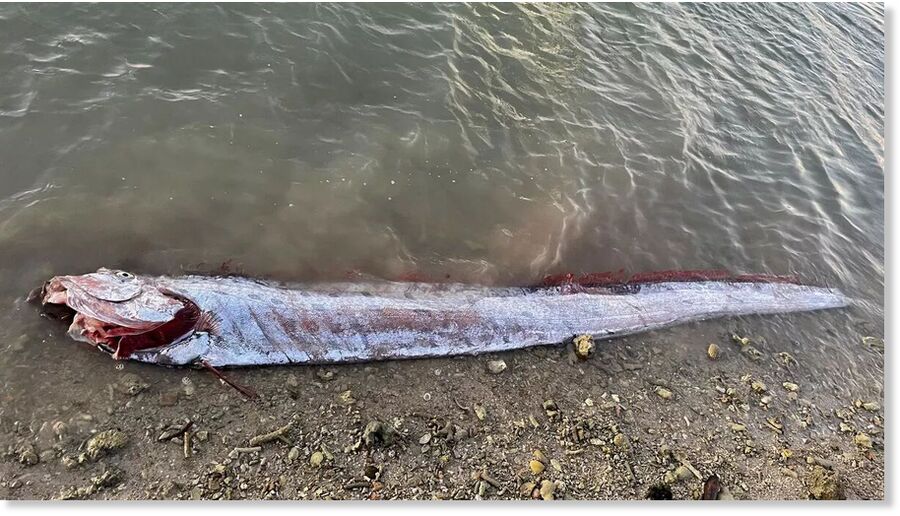
The Oarfish is a deep sea creature that typically lives at ocean depths of up up to 3,300 feet and is rarely seen by humans. But according to Japanese legend, when one of these fish is spotted, its a sign that a catastrophe of some sort is imminent. Now, a fisherman in the neighbouring Philippines has revealed he caught the foreboding fish shortly before Taiwan was shaken by the most powerful earthquake it has seen in 25 years, which has so far killed at least nine people.
Brenjeng Caayon, who snapped up the fish near near Kalanggaman Island, roughly 900 miles south of the epicentre, insists it is no coincidence. He said: This is a bad omen, according to superstition. And it might be an omen, because just this morning an earthquake rocked Taiwan. I didn't believe it before, but now I've started to."
He recalled how he and three other fisherman were out on his boat when they came across the creature just 30 hours before the earthquake hit. At first, his crewmates had no idea how significant the find was as they didn't know what it was. Caayon said: "They were supposed to throw it back in, but I stopped them; I told them to bring it ashore. When I saw it, I recognised it immediately; I've already seen an oarfish before, but not this huge."
The 53-year-old claims the fish weighed 15kg and has cynical beliefs about why he and his colleagues happened upon it that day, dubbing the creature the "doomsday fish". He said: "Everything that happens is a healing of our mother earth. The natural disaster is always there. I believe in God and that's the reason why I'm not afraid."
Originating in a coastal settlement on the east of the island, near Hualien City, Wednesday's 7.4 magnitude earthquake in Taiwan toppled buildings, injuring close to 1000 people and taking the lives of 9. Despite the fantastical nature of the oarfish legend, after a similar occurrence 15 years ago, an expert spoke out about how the phenomenon could be grounded in real science.
Ecological seismologist Kiyoshi Wadatsumi told the Japan Times in: "Deep-sea fish living near the sea bottom are more sensitive to the movements of active faults than those near the surface of the sea." Known by legend as "messengers from the sea god's palace", the myth of the oarfish gained fresh attention when 20 of them were found washed up on beaches before Japan's 2011 earthquake - the the most powerful ever recorded.
However, the Bulletin of the Seismological Society of America dispelled beliefs about the connection in 2019, publishing a report that concluded: "From this investigation, the spatiotemporal relationship between deep‐sea fish appearances and earthquakes was hardly found. Hence, this Japanese folklore is deemed to be a superstition attributed to the illusory correlation between the two events."



Reader Comments
to our Newsletter